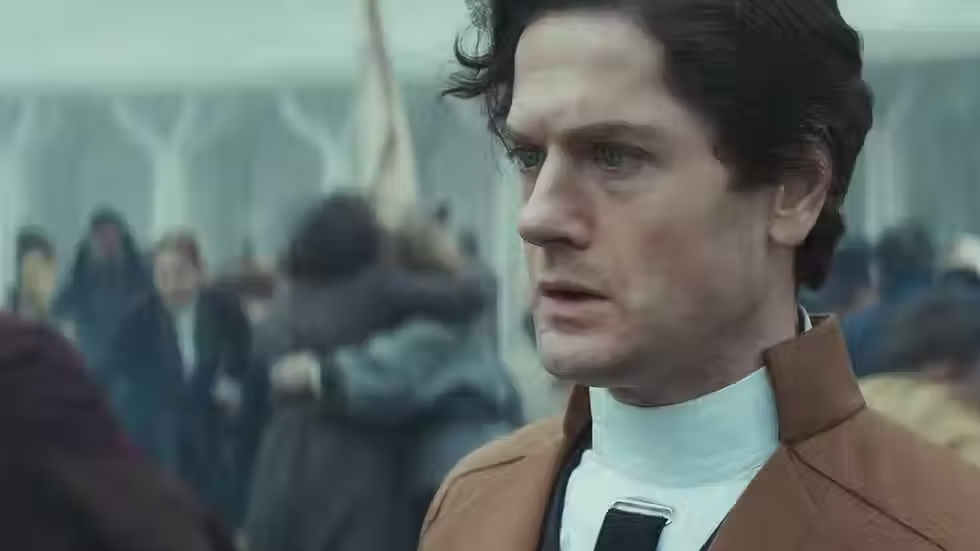Road Warriors, Imperators, and George Miller's Modern Myth
- ogradyfilm
- Nov 27, 2018
- 4 min read
Updated: Oct 21, 2019

“Let them up!”
With the echo of those words across the towering, sun-bleached rocks, the great lift clatters and groans to life, beginning its slow ascent. Finally, Furiosa, caked in blood and sweat and oil and dust, is able to relax. Relieved, she steadies herself against her battle-forged companion, one of the newly liberated wives of the tyrannical Immortan Joe, as the filthy and starving masses flood the platform around her as swiftly as the cool water now cascading into the long parched canyon.
Suddenly, she notices that one of her allies is missing. Scanning the writhing sea of emaciated bodies, she glimpses him, for the briefest of moments: the man who called himself Max. The Road Warrior that finally found his righteous cause. The self-serving feral that found her at her lowest point and, throwing self-preservation into the wind, inspired her to take the fight to her enemies rather than fleeing into certain death on a false hope. Max returns her glance with a nod of acknowledgement. He knows that an animal such as himself has no place in the better world she will build, but that’s okay. He helped Furiosa to find the redemption that she so desperately sought. He hasn’t yet exorcised all of the demons that hound him across the Wasteland, chasing him into the darkest pits of despair and madness, but for once, he hasn’t failed his friends, and that is good enough.

And then, in the blink of an eye, he’s gone.
Amidst the kaleidoscopic spectacle of stunts, car crashes, and explosions, this fleeting instant of wordless human interaction is the most important moment in George Miller’s Mad Max: Fury Road. It elevates the film from a high-octane thrill ride through a bizarre, hellish, yet strangely beautiful landscape and propels it into the realm of universal monomyth.
Consider a simple scenario: a gruff and mysterious loner wanders into a remote town. There, he learns that innocent citizens are being exploited/menaced/oppressed by evil men. The loner wants to continue on his way and abandon these good people to whatever grisly fate awaits them, but something–whether it’s circumstance or some small, nagging sliver of a conscience–prevents him from leaving. He rallies the bravest of the townsfolk, drives away the bad guys, and quietly slips away while everyone else celebrates, riding off into the sunset and, hopefully, on to other adventures.

Now, consider this: does the above synopsis summarize the plot of a classic Western or a samurai movie? The answer, of course, is both: this darker riff on Joseph Campbell’s Hero’s Journey, through generations of repetition and repurposing, has transcended the boundaries of time and culture, recurring, with both minor and significant variations, in tales as diverse as Kurosawa’s Sanjuro, Rian Johnson’s Looper, Naughty Dog’s The Last of Us, and, of course, The Road Warrior, Fury Road’s direct predecessor. However, unlike the classical heroes of Campbell’s model, who must “return home” as part of their larger quest (the “back again” represents an integral part of Bilbo Baggins’ character arc in The Hobbit, for instance), the archetype that Max Rockatansky exemplifies has no home to which he can return; once the lawless man restores order, he is once more cast adrift, so tainted by bloodshed that he cannot enjoy he fruits of his labor. Examples in popular media are nearly limitless: in Shane, the eponymous gunslinger rides away from the young boy that so admires him, knowing that his violent lifestyle will only rob him and his family of the peaceful existence that they deserve; in Seven Samurai, the few remaining survivors of the ragtag band of ronin silently mourn over the graves of their fallen comrades as the villagers they defended cheerfully sing and plant their crops–as their wizened leader solemnly observes, “We lost again. This victory belongs to the farmers.” The closing narration of The Road Warrior, delivered by the now aged Feral Kid as the image of a battered and bloodied Max recedes into the distance, distills the trope down to its most basic form: “And the Road Warrior? That was the last we ever saw of him. He lives now… only in my memories.”

Small, cathartic moments such as these are the reason dark, brooding anti-heroes like Max Rockatansky, Zatoichi, and The Man with No Name continue to resonate with audiences. Beneath their legendary reputations and cynical attitudes lies some inherent goodness that compels them to perform selfless acts. Thus, they personify both the worst and best humanity has to offer: our most crippling and shameful flaws (greed, selfishness, apathy), but also the potential to overcome them in the interest of serving the greater good.
Mad Max: Fury Road will be justifiably celebrated for its stunning visuals and adrenaline-pumping action, but it will endure because it continues a much grander storytelling tradition. That, above all else, is why it succeeds where its contemporaries in the field of popcorn entertainment so often fail: the themes it explores tap directly into something old and mythic, speaking directly to our collective unconscious.
[Originally written May 24, 2015.]





Comments